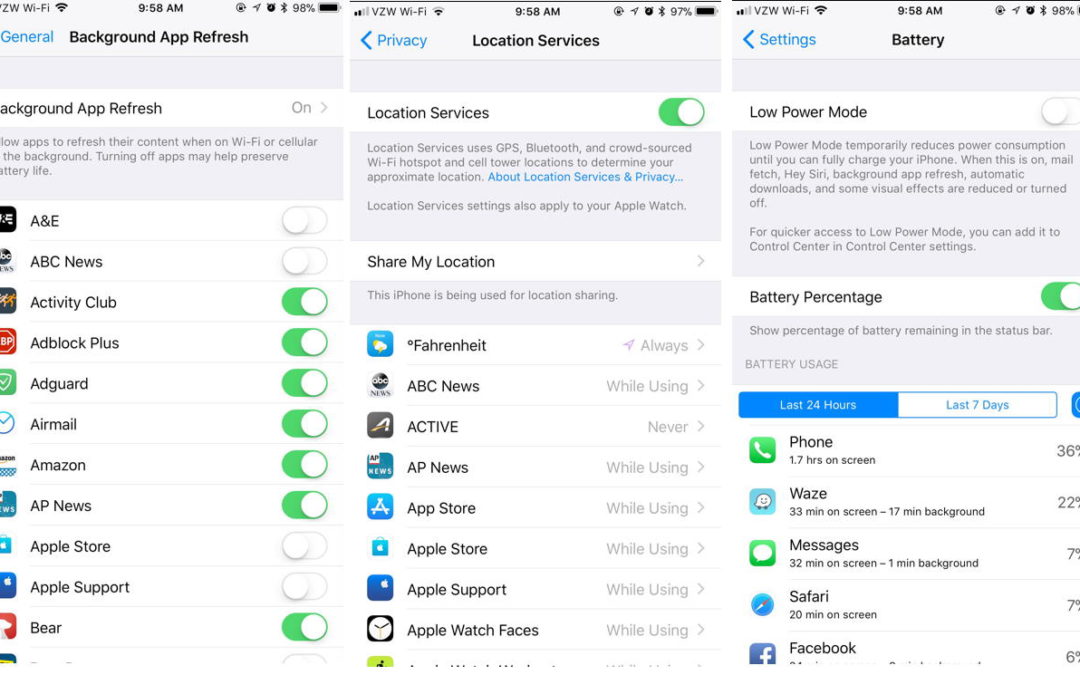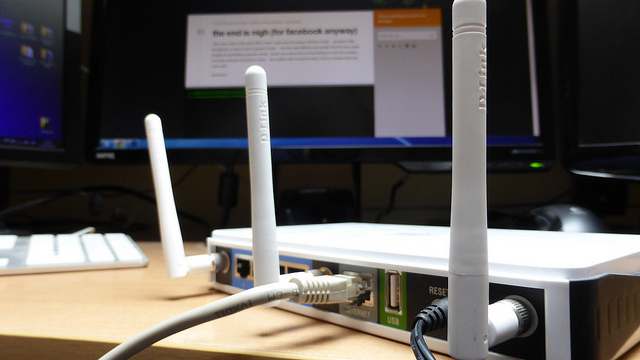
My Battery Life Is Shot Since Updating To iOS 11!
As of last week, nearly 50% of compatible iPhones have been updated to the new iOS 11 that was released a few weeks ago. Hopefully many of you are enjoying the new features….but more than likely you’ve noticed that since the update your battery life on your phone has significantly decreased. Sound familiar? Actually, there’s reports of this happening with any new update to a phone (iPhone or Android), so it happens to all smartphone users. We’re going to run down a few things to check with the newest iOS update…and see if we can minimize that drain with a few simple tips.
One probable cause you don’t want to discount is USER ACTIVITY when you’re checking out all those new features. You get the new software, and things look different, so you spend time logging into everything, trying apps and setting things up, and all of that drains your battery because it’s more use than normal. I know, I know….it’s not the only cause of your battery issues, but it’s definitely something to throw into the mix.
Luckily, iOS makes it easy to look at what’s hogging your battery. Go into Settings > Battery, and there’s a whole menu devoted to battery usage. See what the top apps are in both the last 24 hours, and in the last 7 days. Try uninstalling and reinstalling some of the biggest apps to see if that makes a difference (like Facebook or Instagram), as it’s possible that some apps haven’t been updated for the new operating system yet, and are inefficiently using battery. You can also get more information about an app by clicking on the biggest apps to see how much battery drain was on the screen versus in the background. If a good chunk of the battery life was spent in the background, consider disabling Background App Refresh for those apps (Settings > General > Background App Refresh).
The next thing to check is Location Services- or what’s tracking your location. Here’s where it saved me a LOT of battery life. I had several apps that were all using my location in the background all of the time. Go to Settings > Privacy > Location Services at the top. Review this list of your apps that can get your location, and consider shutting off access to many of them. Remember those popups we sometimes get when we first open an app? It will ask us if it’s ok to use the location- and sometimes we’re so anxious to just use the app we say yes to get into the program we don’t fully read what it says. Here’s how you can turn it off, and stop things from tracking where you are. (Do note….blocking location from weather or GPS apps significantly diminish their usability….so consider simply changing it from Always using your location to “While Using” if you’re unsure.
Similar to location is GPS programs. The biggest battery draining apps on the phone are almost always GPS programs. Sure, it’s convenient to use Apple Maps or Waze on your phone, but if you do it for a few hours, your battery will significantly be depleted. To help that, make sure you turn off the GPS app when you’re done using it (i.e. get to your destination, double tap the home button and find the GPS app, and swipe up to stop it from running at all). It won’t access your location in the background (if you set it to “while using” above), and will significantly save your battery life.
If you review these features, and make some changes, give it a day or two and see if things are better on your phone. I know in those first few days after updating, it was painfully draining….but now it’s significantly better. If you think you have a problem with the phone, and these tips aren’t helping it, reach out to Canyonero Consulting, and we’ll see how we can help!



